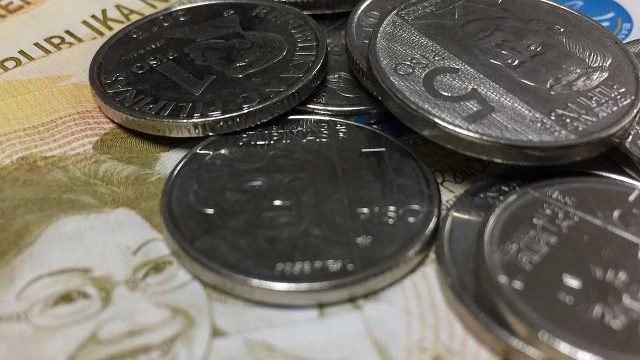
BANK LENDING slipped for an eighth consecutive month in July, although at a softer pace as borrowings for production activities increased amid looser quarantine restrictions.
Outstanding loans issued by big banks dipped 0.7% year on year to P9.137 trillion in July, based on preliminary data from the Bangko Sentral ng Pilipinas (BSP) released Tuesday evening.
The decline in July is softer than the 2% contraction in June, and matched the drop seen in December 2020. To recall, December saw bank lending fall for the first time since September 2006.
Inclusive of reverse repurchase agreements, outstanding loans disbursed by big banks slid by 0.5%.
Bank lending rose by 0.5% on a seasonally adjusted basis month on month, as July saw a further relaxation of restrictions in the capital region.
“Looking ahead, the BSP will continue to prioritize monetary policy support in order to ensure the continued momentum of economic recovery,” the central bank said in a statement.
“At the same time, the National Government’s targeted fiscal initiatives and health interventions will be crucial in boosting domestic demand and strengthening the recovery.”
The softer decline in bank lending reflects the lag in the effect of monetary policy, ING Bank N.V. Manila Senior Economist Nicholas Antonio T. Mapa said.
Policy rates are currently at a record low after the Monetary Board cut policy rates by a total of 200 basis points in 2020.
“BSP’s last follow-through rate cut in November appears to be finally helping lift lending somewhat with August bank lending expected to post a modest gain on a year-on-year basis,” Mr. Mapa said in an e-mail.
In July, lending for production activities rose 0.8%, a turnaround from the 0.6% contraction in June. The BSP attributed this to the higher borrowings for real estate activities (5.9%); information and communication (14%); electricity, gas steam and air-conditioning supply (2.1%); and transportation and storage (7%).
On the other hand, bank loans for other commercial activities dropped, including those for wholesale and retail trade and repair of motor vehicles and motorcycles (-4.5 %) and manufacturing (-2.6%).
Retail loans contracted by 8.2% in July, although softer than the 8.7% fall in June. Consumer loan segments continued to decline, led by motor vehicle loans (-15.4%), salary-based loans (-5.8%), and credit cards (-1.6%).
Even after a two-week strict lockdown was implemented in August, analysts are hopeful that credit growth will pick up in the coming months.
“I am expecting that the enhanced community quarantine (ECQ) of 2020 is not the same with the ECQ of 2021, and that the latter a lighter version of the other, in terms of the magnitude of restrictions. With this, I am hoping for a softer negative impact than that of 2020,” UnionBank of the Philippines, Inc. Chief Economist Ruben Carlo O. Asuncion said in an e-mail.
Banks’ risk appetite could improve once economic activities pick up in the next few months depending on the country’s pandemic management, Mr. Mapa said.
“We’ve noted the likely normalization of business activity if the country is better able to contain the virus and authorities must do all they can on the public health front to ensure an eventual smooth transition back to business operations,” he added.
M3 GROWTH SLOWS
The eighth straight month of lending decline coincided with continued growth in money supply, although slower than what was seen in June.
M3 — which is considered as the broadest measure of liquidity in an economy — rose by 5.9% in July, slower than the 6.5% growth in June, based on preliminary BSP data also released on Tuesday evening.
It rose by 0.1% month on month.
The slower M3 growth was likely due to base effect given the aggressive liquidity infusion measures done last year at the onset of the pandemic, Rizal Commercial Banking Corp. Chief Economist Michael L. Ricafort said.
Domestic claims increased 4.5%, easing from the 5.3% expansion in June. The BSP attributed this to the increase in net claims on the central government as well as the slight improvement in bank lending to the private sector.
“Going forward, the BSP will ensure that domestic liquidity remains adequate to support domestic economic activity, in line with the BSP’s price and financial stability objectives,” the central bank said.
The central bank has provided liquidity to the financial system through various easing measures. It has released some P2.2 trillion into the financial system, which is equivalent to about 12.1% of gross domestic product.
Despite this liquidity boost, banks remained risk-averse amid increased uncertainty as the pandemic continued.
In August, BSP Governor Benjamin E. Diokno said the central bank is not keen on raising rates or cutting banks’ reserve requirement ratio (RRR) while the country is still at the early stages of recovery.
He said there is still a lot of liquidity in the system, adding they might consider the need for further reduction in the RRR when there is strong loan demand.
The BSP kept the key policy rate unchanged at 2% in its Aug. 12 meeting. The Monetary Board will have its next policy-setting meeting on Sept. 23. — Luz Wendy T. Noble
Bank lending slips for 8th straight month in July
Source: Bantay Radio
0 Comments